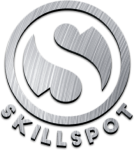
In today’s digital-first business environment, the line between personal and professional has blurred significantly. B2B buyers no longer engage solely with companies—they connect with individuals. This shift has created an unprecedented opportunity for sales representatives and marketers to develop personal brands that elevate their careers and directly impact their organization’s pipeline.
A strong personal brand isn’t just about popularity or influence—it’s about becoming a trusted resource that opens doors, builds credibility, and ultimately generates business opportunities. This strategic approach to personal branding can transform cold outreach into warm introductions and skeptical prospects into engaged leads.
Why Personal Branding Matters in B2B Sales and Marketing
The B2B buying process has fundamentally changed:
- Research dominates the buyer journey: 70-80% of the B2B buying journey occurs before a prospect ever speaks to a sales representative
- Trust has been decentralized: Buyers trust individual experts more than corporate messaging
- Decision-makers seek social proof: 82% of B2B buyers view content from industry influencers during their purchase process
- Digital presence creates pre-meeting impressions: 98% of sales professionals say prospects research them online before meetings
These changes have created an environment where personal brand directly impacts pipeline development:
Personal Branding Impact on Sales Metrics:
- 78% higher response rates to outreach from recognized individuals
- 54% shorter sales cycles when buyers are already familiar with the seller
- 45% higher conversion rates when leads come through personal connections
- 92% of B2B buyers engage with sales professionals viewed as industry thought leaders
The Personal Brand Framework: Build, Engage, Convert
Effective personal branding for pipeline generation follows a systematic process:
Phase 1: Establish Your Brand Foundation
Before creating content or building an audience, define the essential elements of your professional identity:
1. Define Your Brand Position
Your position is the intersection of:
- Your expertise: What you genuinely know deeply
- Market demand: What your target audience values
- Competitive landscape: Where you can establish a unique voice
- Business alignment: How it connects to your sales objectives
Positioning exercise: Complete this statement in one clear sentence: “I help [specific audience] achieve [desired outcome] through [your unique approach].”
Example positioning statements:
- “I help manufacturing executives navigate digital transformation through practical, phased implementation strategies.”
- “I help B2B marketers measure content ROI through simplified attribution models and analytics frameworks.”
- “I help SaaS sales leaders build predictable pipeline through AI-enhanced prospecting techniques.”
2. Identify Your Audience Segments
Define precisely who you want to reach:
- Primary decision-makers: Titles, industries, company sizes
- Influential stakeholders: Those who shape buying decisions
- Potential advocates: People who can amplify your message
- Industry connectors: Those with strong networks in your space
Audience precision tip: Create 2-3 specific buyer personas with detailed attributes, including:
- Professional challenges and goals
- Content consumption preferences
- Career aspirations and fears
- Information sources they trust
- Decision-making involvement
3. Develop Your Brand Voice and Story
Create guidelines for how you’ll communicate:
- Tone and style: Professional yet conversational? Data-driven? Story-focused?
- Content themes: 3-5 core topics you’ll focus on consistently
- Personal narrative: Your professional journey and “why”
- Visual identity: Consistent photo, colors, and presentation style
Brand voice checklist:
- Is it authentic to who you are?
- Can you maintain it consistently across platforms?
- Does it resonate with your target audience?
- Does it stand out from typical corporate messaging?
- Can you sustain it through various content types?
4. Create Your Brand Measurement Framework
Establish metrics that connect branding to pipeline:
- Visibility metrics: Followers, connections, reach
- Engagement metrics: Comments, shares, saved content
- Relationship metrics: DMs, email subscribers, community members
- Opportunity metrics: Inquiries, meetings requested, referrals
- Pipeline metrics: Deals influenced, sales cycle impact, close rates
Measurement implementation tip: Set up a simple monthly dashboard that tracks these metrics so you can see correlations between brand-building activities and pipeline results.
Phase 2: Build Your Content Engine
With your foundation established, create systems to generate valuable content consistently:
1. Identify Your Content Sweet Spots
The most effective content sits at the intersection of:
- What you know well
- What your audience values
- What isn’t already saturated
- What connects to your solutions
Content mapping exercise: Create a grid with these four quadrants and list potential topics. Focus on areas that score highly across all dimensions.
2. Develop Your Content Pillars
Create 3-5 core content themes that will define your expertise:
Example pillar structure for a sales enablement professional:
- Pillar 1: Sales technology evaluation and implementation
- Pillar 2: Rep onboarding and productivity acceleration
- Pillar 3: Cross-functional alignment between sales and marketing
- Pillar 4: Sales process optimization and metrics
- Pillar 5: Future trends in B2B selling methodology
Content pillar tip: Ensure each pillar clearly connects to the business challenges your solution addresses without being overtly promotional.
3. Create Your Content Format Strategy
Identify which content formats align with:
- Your natural communication strengths
- Your audience’s consumption preferences
- Your available time and resources
- The complexity of your topics
Content format options:
- Written: LinkedIn posts, articles, newsletters, guest blogs
- Visual: Infographics, slides, charts, visual frameworks
- Video: Short-form tips, interviews, whiteboard sessions
- Audio: Podcast appearances, audio clips, spaces/chats
- Interactive: Polls, assessments, Q&A sessions, live events
Format selection strategy: Start with one primary format you can execute consistently, then gradually expand to 2-3 formats that complement each other.
4. Implement a Content Creation System
Develop a sustainable content production approach:
- Content calendar: Scheduled topics and posting cadence
- Creation blocks: Dedicated time for content development
- Content batching: Creating multiple pieces in single sessions
- Resource collection: Systems for capturing ideas and insights
- Repurposing workflow: Process for adapting content across formats
System example:
- Monday morning: 30 minutes to collect ideas and plan the week’s content
- Wednesday afternoon: 90-minute block to create 2-3 LinkedIn posts
- First Friday monthly: 3-hour block to create one deep-dive piece
- Ongoing: Capture ideas in a dedicated note app with voice memos
Phase 3: Build Strategic Visibility
With your content foundation in place, implement tactics to expand your reach:
1. Platform Selection and Optimization
Choose platforms strategically based on:
- Where your target audience actively engages
- Which platforms align with your content formats
- Where you can realistically maintain a consistent presence
- Which environments complement your communication style
B2B personal branding platform assessment:
LinkedIn:
- Strengths: Unmatched B2B audience, professional context, strong organic reach
- Content types: Articles, posts, documents, videos, newsletters
- Time investment: 30-60 minutes daily for optimal engagement
- Pipeline potential: High (direct connection to decision-makers)
Twitter:
- Strengths: Real-time engagement, broader reach, conversation-based
- Content types: Short insights, threads, polls, curated content
- Time investment: Multiple check-ins throughout the day
- Pipeline potential: Medium (suitable for initial awareness)
Industry platforms:
- Strengths: Highly targeted audience, established credibility
- Content types: Guest posts, expert contributions, community engagement
- Time investment: 3-5 hours per piece, less frequent
- Pipeline potential: High (reaches decision-makers in research phase)
Optimization tip: Rather than trying to be everywhere, master one platform before expanding to others. For most B2B professionals, LinkedIn should be the primary focus initially.
2. Engagement Strategies
Building visibility requires strategic interaction with your ecosystem:
- Value-first commenting: Provide substantive insights on others’ content
- Strategic tagging: Thoughtfully include relevant voices in conversations
- Community participation: Actively engage in groups and forums
- Collaboration initiatives: Create content with complementary experts
- Amplification circles: Develop mutual support networks
Engagement system example:
- Daily: Comment thoughtfully on 5-7 posts from target connections
- Weekly: Engage in 2-3 group discussions in your industry
- Monthly: Collaborate with one complementary expert on content
- Ongoing: Amplify and support content from key relationships
3. Relationship Development Tactics
Transform platform connections into meaningful professional relationships:
- Conversation starters: Non-sales messages that open dialogues
- Value-delivery outreach: Sharing relevant resources without asking
- Digital-to-real transitions: Moving online connections to calls/meetings
- Strategic generosity: Becoming known for connecting and helping others
- Consistent touchpoints: Regular, non-intrusive relationship nurturing
Relationship nurturing example:
Initial connection → Thoughtful comment on their content → Share relevant resource →
Request brief conversation on shared interest → Explore how you might help them →
Regular value-adding touchpoints → Business opportunity emerges naturallyPhase 4: Convert Brand to Pipeline
This is where personal branding transcends vanity metrics and creates tangible business value:
1. The Bridge Content Strategy
Create specific content designed to transition from thought leadership to business conversations:
- Problem-solution frameworks: Structured approaches to common challenges
- Decision-making guides: Vendor-neutral evaluation tools
- ROI calculators: Tools for quantifying improvement opportunities
- Implementation roadmaps: Step-by-step processes for achieving outcomes
- Diagnostic assessments: Resources for self-evaluating current state
Bridge content example: A sales enablement professional might create “The Sales Technology Stack Assessment Guide” that helps prospects evaluate their current tools while naturally highlighting gaps their solution addresses.
2. Invitation Mechanisms
Develop natural ways to transition from content engagement to conversations:
- Value-based offers: Free consultations framed as helpful sessions
- Micro-experiences: Small samples of your solution’s value
- Co-creation opportunities: Collaborative projects with prospects
- Exclusive insights: Access to research or data not publicly available
- Community invitations: Private group discussions on relevant topics
Invitation example: “I’ve helped several companies work through this challenge. If you’d like, I’d be happy to share the framework we use during a quick call – no pitch, just a practical tool you can implement immediately.”
3. Leverage Social Proof Strategically
Use established credibility to warm up sales interactions:
- Reference networking: Connecting through mutual relationships
- Targeted case sharing: Providing relevant success stories
- Expertise demonstration: Solving small problems to showcase capability
- Personalized insights: Creating custom analysis for high-value targets
- Facilitator positioning: Connecting prospects to resources beyond your offering
Social proof leverage example: When reaching out to a prospect engaged with your content: “I noticed you commented on my article about [topic]. We recently helped [similar company] address that exact challenge, and I thought you might find their approach interesting. Would you like me to share how they tackled it?”
4. Integrate with Formal Sales Process
Connect personal branding activities to your organization’s sales methodology:
- CRM documentation: Track content engagement and interactions
- Nurture alignment: Coordinate personal outreach with marketing automation
- Team leveraging: Enable colleagues to share your content with their prospects
- Management visibility: Report on brand-influenced pipeline
- Success stories: Document how personal brand touchpoints influenced wins
Integration example: Create a simple field in your CRM to track which prospects engaged with your content before becoming opportunities, allowing you to demonstrate the ROI of your personal branding efforts.
Personal Branding Strategies by Role
Different B2B roles require tailored approaches to personal branding:
For Sales Development Representatives (SDRs)
Focus areas:
- Building credibility despite potentially limited experience
- Creating content that opens doors for initial conversations
- Demonstrating understanding of prospect challenges
- Differentiating from the sea of other SDRs
Effective tactics:
- Curate and add insights to thought leaders’ content
- Document and share learning journey and observations
- Create micro-content addressing specific pain points
- Build relationships with internal experts and share their insights
Example approach: Create a weekly “3 Things I Learned” post highlighting customer conversations, industry research, and product insights.
For Account Executives
Focus areas:
- Establishing domain expertise in specific industries
- Building trust with multiple stakeholders
- Creating content relevant to buying committee concerns
- Developing a reputation for client success advocacy
Effective tactics:
- Share anonymized stories solving customer challenges
- Create decision-making frameworks for evaluation processes
- Develop content addressing typical objections indirectly
- Highlight customer success milestones (with permission)
Example approach: Create a “Buyer’s Guide” specific to your industry that helps prospects make better decisions, regardless of vendor.
For Marketers
Focus areas:
- Demonstrating both creative and analytical capabilities
- Showing deep understanding of audience psychology
- Building credibility for both strategy and execution
- Connecting marketing activities to business outcomes
Effective tactics:
- Break down successful campaigns (yours and others)
- Share data insights and measurement approaches
- Document your testing processes and learnings
- Create frameworks for evaluating marketing effectiveness
Example approach: Create a “Marketing Experiment of the Week” series, documenting tests, hypotheses, results, and lessons from your campaigns.
Building Your Personal Brand Content System
Consistency is the cornerstone of effective personal branding. Implement these systems to maintain momentum:
1. The Minimum Viable Content Strategy
Start with a sustainable approach:
- Weekly anchor post: One substantial LinkedIn post in your core area
- Daily micro-engagement: Thoughtful comments on 3-5 relevant posts
- Monthly deep dive: One comprehensive piece (article, video, etc.)
- Quarterly flagship content: Major thought leadership piece or collaboration
Implementation tip: Block these activities in your calendar as non-negotiable appointments with yourself.
2. The Content Idea Generation System
Never run out of relevant things to share:
- Client question log: Document and answer common prospect questions
- Insight capture process: System for recording observations and ideas
- Content curation feeds: Organized sources for industry developments
- Collaborative brainstorming: Regular sessions with peers or mentors
- Trend monitoring system: Alerts for industry news and developments
System example: Create a simple note on your phone with three sections: Questions I’m Asked, Challenges I Observe, and Ideas to Explore. Add to it throughout your workday.
3. The Content Creation Workflow
Streamline your production process:
- Template development: Standardized formats for shared content types
- Batching system: Creating multiple pieces in dedicated time blocks
- Review process: Quick quality checks before publishing
- Repurposing path: Workflow for adapting content across formats
- Publication checklist: Consistent steps for effectively sharing content
Workflow example:
Idea capture → Outline creation (5 min) → Initial draft (20 min) →
Quick edit (5 min) → Add value enhancers (5 min) → Final check (2 min) →
Publish with engagement question → Active response to commentsMeasuring Personal Brand Impact on Pipeline
Connect your personal branding efforts to business results with these measurement approaches:
1. Attribution Tracking
Implement systems to connect content engagement to opportunities:
- UTM parameters: Track when prospects come from your content
- CRM documentation: Note when opportunities engage with your content
- Pipeline influence fields: Record personal brand touchpoints in deals
- Engagement tracking: Monitor which prospects interact with your content
- Conversion path analysis: Identify everyday journeys from content to conversation
Implementation example: Create a simple “How did you hear about me/us?” form for all initial meetings, with specific options for your content channels.
2. Leading Indicators
Monitor early signals that predict pipeline impact:
- DM request volume: Direct messages initiated by prospects
- Content response rate: Comments and meaningful engagement
- Profile view increases: Especially from target accounts
- Saved content metrics: How many people save your posts/articles
- Referral mention frequency: People pointing others to your content
Measurement approach: Track these metrics weekly in a simple spreadsheet to identify trends and correlations with pipeline activity.
3. Qualitative Assessment
Gather feedback on how your content influences perceptions:
- Sales call mentions: Prospects referencing your content
- Discovery call quality: Improved initial conversations
- Objection reduction: Fewer concerns in the sales process
- Meeting preparation: Prospects coming better informed
- Competitive positioning: Favorable comparisons to alternatives
Assessment method: After calls or meetings, note any mentions of your content or indications that the prospect was familiar with your perspectives.
Case Studies: Personal Brands That Drive Pipeline
Case Study 1: The SDR Content Creator
Profile: Jordan, SDR at B2B software company
Approach: Created weekly “5-Minute Industry Insight” videos
Content focus: Summarizing the latest industry news with implications for prospects
System: Record 4-5 videos each Friday afternoon for the coming week
Results:
- 340% increase in response rates to outreach
- 58% of meetings mentioned having seen his content
- Promoted to AE role 4 months ahead of schedule
- Now trains team on personal brand development
Key insight: “The content itself wasn’t revolutionary—the consistency and genuine desire to help that built credibility. Prospects stopped seeing me as ‘just another SDR’ and started seeing me as a knowledgeable resource.”
Case Study 2: The Industry Specialist AE
Profile: Sophia, Enterprise AE in manufacturing technology
Approach: Developed deep expertise in sustainability compliance
Content focus: Regulatory updates and implementation frameworks
System: Monthly in-depth article with weekly shorter updates
Results:
- Generated 12 inbound inquiries from target accounts in the first quarter
- Reduced sales cycle by 37% for content-engaged prospects
- Achieved 140% of quota while spending less time on cold outreach
- Now invited to speak at industry events, further building pipeline
Key insight: “By focusing on a specific niche where our solution had an advantage, I became the go-to resource for a high-value market segment. When regulations changed, prospects came to me first, before competition was even aware.”
Case Study 3: The Marketing Mentor
Profile: Marcus, Marketing Director at SaaS company
Approach: Transparent documentation of marketing experiments
Content focus: Real results, failures, and learning from campaigns
System: Weekly LinkedIn article breaking down one tactic with results
Results:
- Built a subscriber list of 15,000+ marketing professionals
- Generated 40+ qualified opportunities from content in first year
- Reduced customer acquisition cost by 22% through referrals
- Created a new partnership channel representing 15% of revenue
Key insight: “I built unusual trust by openly sharing our failures and successes. Prospects would tell me they felt they already knew our team and approach before we spoke. It completely transformed the first call dynamic.”
Common Challenges and Solutions
Challenge 1: Time Management
Problem: Balancing personal branding with core job responsibilities
Solutions:
- Start with just 30 minutes daily in a consistent time block
- Create templates and systems to reduce production time
- Repurpose existing work (call notes, presentations, emails) into content
- Use voice-to-text for initial drafts while commuting/between calls
- Batch-create content during lower-demand periods
Challenge 2: Content Consistency
Problem: Maintaining a regular publishing schedule long-term
Solutions:
- Build a content backlog during motivated periods
- Create a simple content calendar with flexibility
- Develop “evergreen” pieces that can be shared anytime
- Establish accountability with peers or mentors
- Start with a realistic cadence (weekly, not daily)
Challenge 3: Company Alignment
Problem: Ensuring personal brand supports company objectives
Solutions:
- Share your branding strategy with leadership
- Align content themes with company messaging pillars
- Track and report pipeline influence regularly
- Collaborate with marketing on key initiatives
- Create content that supports current company priorities
Challenge 4: Measuring Impact
Problem: Connecting personal branding to revenue results
Solutions:
- Implement basic UTM tracking on shared links
- Create custom fields in CRM for brand-influenced opportunities
- Ask new leads how they discovered you/your company
- Track meeting acceptance rates for cold vs. content-engaged prospects
- Document qualitative feedback about your content from sales calls
Building Your 30-Day Personal Brand Launch Plan
Start your pipeline-generating personal brand with this structured approach:
Week 1: Foundation Setting
- Day 1-2: Define your positioning statement and audience
- Day 3-4: Audit your current online presence and content
- Day 5: Establish your content pillars and themes
- Weekend: Optimize your LinkedIn profile completely
Week 2: System Building
- Day 1-2: Create content templates and idea capture system
- Day 3-4: Develop your measurement framework
- Day 5: Set up your content calendar for the next 30 days
- Weekend: Pre-create 3-5 pieces of content as a starting backlog
Week 3: Content Launch
- Day 1: Publish your first substantive piece of content
- Day 2-3: Engage actively with relevant industry content
- Day 4: Reach out personally to 5-10 connections about your focus
- Day 5: Share a valuable resource with your network
- Weekend: Analyze the first week’s engagement and refine the approach
Week 4: Amplification and Connection
- Day 1-2: Collaborate with a colleague on content piece
- Day 3: Implement one new content format or channel
- Day 4: Create your first “bridge content” piece
- Day 5: Review metrics and document initial learnings
- Weekend: Develop your sustainability plan for the next 90 days
Conclusion: The Compound Effect of Personal Branding
Building a pipeline-generating personal brand isn’t about overnight viral success or becoming an influencer with millions of followers. It’s about consistently demonstrating value to a specific audience that aligns with your business objectives.
The true power of this approach comes from its compound effect. Each piece of content, each thoughtful engagement, and each relationship developed contributes to a growing asset that generates increasing returns over time. While traditional prospecting may deliver diminishing results as markets become more saturated, a well-developed personal brand becomes more valuable and effective each month.
The most successful B2B professionals recognize that in today’s digital-first world, their brand isn’t separate from their sales or marketing function—it’s a fundamental amplifier of it. By investing in this strategic asset, you not only improve current pipeline development but also build a foundation for long-term career success that transcends any single role or company.
Start small, focus on consistency over volume, measure what matters, and align every effort with genuine value for your audience. The pipeline will follow.
To learn how SkillSpot can help your business, visit www.theskillspot.com



